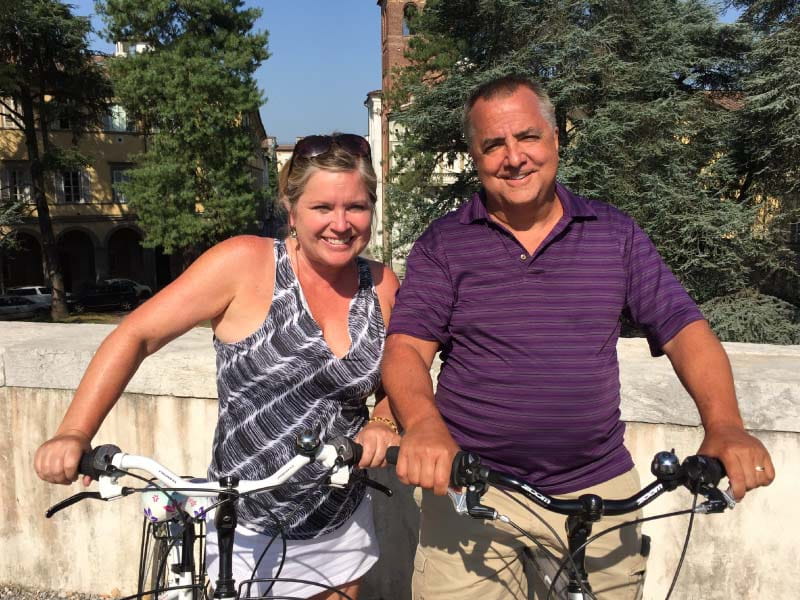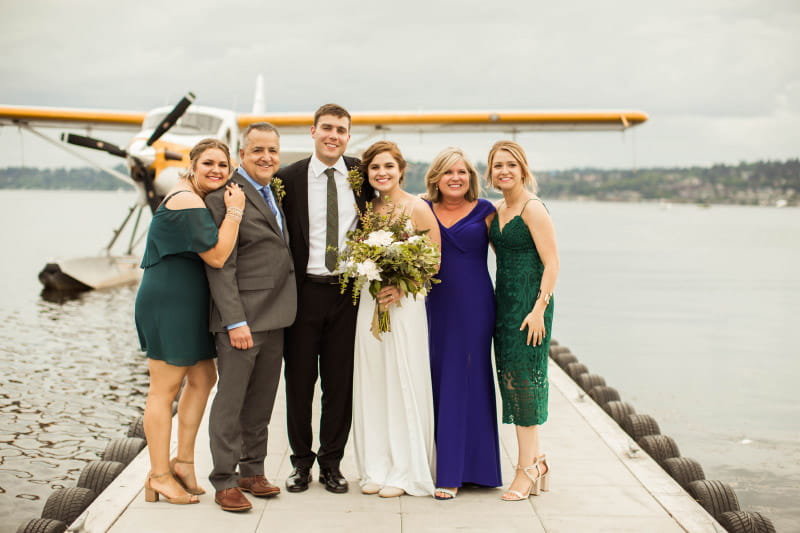Because she gave her husband CPR, their daughters had time to say goodbye
By Diane Daniel, American Heart Association News

Dori Monson sat on the couch cheering on the Washington Huskies in the Alamo Bowl. His wife, Suzanne, was in the next room working on a jigsaw puzzle, a Christmas gift from one of their three daughters.
A week earlier, Dori and Suzanne had hosted an early holiday family gathering at their home just outside Seattle. In the days since, one daughter had gone to Minneapolis to visit her boyfriend's family and another went skiing in Canada.
During halftime, Dori popped in to see Suzanne. As he often did, he took the opportunity to serenade her on the piano. He'd played since childhood, and Billy Joel was one of his favorites. He sang "Lullabye (Goodnight, My Angel)." Even after being married for 35 years, Suzanne found the gesture romantic.
When the third quarter kicked off, Dori was back on the couch. Suzanne heard a loud snort from his direction. It wasn't uncommon for him to drift off while watching television. He had sleep apnea and snored loudly.
Suzanne expected a loud exhale to follow. She heard nothing.
So she went to check on him.
Dori wasn't alert. Suzanne shook him and he didn't respond. At 61, he'd gone into cardiac arrest.
Suzanne recognized what was happening because she and Dori had been trained in CPR. They did so for many years when they coached girls' sports teams, including their daughters'.
She called 911, then started giving chest compressions. The dispatcher kept her on the phone, encouraging her.
At one point, Suzanne heard a rib break, which can happen during firm chest compressions.
"Way to go!" the dispatcher said. "Don't stop now! Keep it up!"
Paramedics arrived within two and a half minutes.
EMTs connected Dori to an automated external defibrillator, or AED. The machine can help restart a heart that has stopped beating. The third shock of the AED triggered a sustainable rhythm. But Dori didn't regain consciousness.
As the paramedics were wheeling Dori out on a gurney, an EMT outside asked, "How did he survive this long?"
"I gave him CPR," Suzanne said.
She was surprised when he high-fived her.
At the emergency room, a doctor asked Suzanne, "Are you the wife who gave CPR?"
He high-fived her, too.
She wondered why giving CPR would be so noteworthy. Wouldn't anyone jump in and do what they could to save a life, she wondered?
The one daughter who was still in town went to the hospital with Suzanne. The others rushed home from Minneapolis and Canada. Meanwhile, the family waited for testing to show the severity of damage. (Doctors said the cardiac arrest was likely related to sleep apnea.)
The next day, Suzanne held Dori's hand, read to him and rubbed his feet. And she prayed, leaning on the strong faith they shared throughout their marriage.
The following day was New Year's Eve, 2022.
That afternoon, while the family was at his hospital bedside, the neurologist delivered a prognosis based on the test results: Dori had been without oxygen for too long. His brain could no longer function.
The family discussed what to do next.
Dori was a longtime radio news and sports broadcaster in Seattle, so he had legions of fans and dozens of current and former colleagues. Suzanne wasn't sure who to tell what and when.
The family returned home, wondering whether they should invite close friends to say goodbye at the hospital.
Before they could decide, they got a phone call. Dori's health was deteriorating. They needed to come back to the hospital quickly.
There, each daughter had time with her father. Finally, the family gathered around Dori. Suzanne snuggled up next to him while their children gathered close.
They played "Lullabye," the same song Dori had played for Suzanne three days earlier.
"It was the most spiritual experience I've ever had," Suzanne said. "I felt his soul lift to heaven."
As Suzanne processed the tragic outcome of the past few days, she took solace in the CPR she performed. It extended Dori's life in a meaningful way.
"Otherwise, the girls wouldn't have been able to say their goodbyes," she said. "That time with our family was a priceless gift."

Curious why medical staff were so impressed that she'd done CPR, Suzanne learned that many people either don't know CPR, do it incorrectly or are paralyzed with fear in an emergency. In fact, lay people administer CPR in only about 40% of cases, according to the American Heart Association. An estimated 350,000 cardiac arrests occur outside of hospitals each year in the United States, and more than 70% of them occur in a home.
Suzanne decided to hold an event to teach people how to give CPR and use an AED. She targeted women because Dori, as a husband, father and girls' basketball coach, was a fierce advocate for women on and off the court.
She reached out to Michelle Pidduck, community educator at the Shoreline Fire Department in Washington, which had responded to Dori's cardiac arrest. Community groups pitched in to help cover expenses. Pidduck marshaled volunteer trainers, along with some 50 manikins, to teach how to give CPR and use an AED.

About 150 people attended the free event. Several were longtime followers of Dori who wanted to honor his memory.
"I wanted people to understand the whole process, so it didn't feel overwhelming," Pidduck said. "The big thing is to not overthink it and just get started. CPR these days is so much easier for people to do."
Stories From the Heart chronicles the inspiring journeys of heart disease and stroke survivors, caregivers and advocates.





